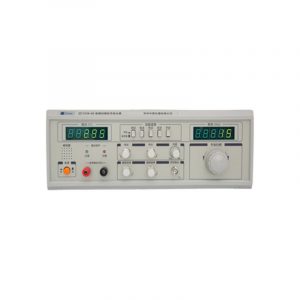The instrument is mainly used to measure and sort the sensitivity and working current of the electret microphone at two frequencies of 1000Hz and 70Hz. The sensitivity of 1000Hz and 70Hz is indicated by two pointers of a double-pointer meter respectively (the black pointer indicates 1000Hz and the red pointer indicates 70Hz). The working current of the electret microphone is directly indicated by an ammeter. Because the electret microphone tester adopts a double-pointer ammeter with a large open surface, it can easily and accurately read out the voltage values at two frequencies of 1000Hz and 70Hz, and quickly measure the performance of the electret microphone.
The instrument has the characteristics of convenient use, accurate test, and fast speed. It is especially suitable for electret microphone production line
Usage thod:
1. First check the appearance, adjust the mechanical zero position of the meter, insert the calibration meter rod (on the panel) and the sound cavity (the sound cavity socket is on the back of the instrument), turn on the power and preheat for 15 minutes.
Note: the dark mark of the calibration bar is connected to the ground end of the microphone.
2. Set the working voltage, load resistance, test frequency (point frequency or mixing), and select the range switch * of the electret microphone as required. Then place the standard electret microphone on the sound cavity and adjust the calibration potentiometer to make the reading of the instrument the same as that of the standard electret microphone. After calibration, it can be measured.
Use of range switch:
When the range selection switch is in gear 0, the reading range is - 50dB ~ - 30dB, and the voltage reading (lower scale) is 0 ~ 30mV.
When the range selection switch is at - 10dB, the reading range is - 60dB ~ - 40dB, [- 30dB + (- 10dB) = - 40dB], and the voltage reading is cancelled.
When the range selection switch is at + 10dB, the reading range is - 40dB ~ - 20dB, [- 30dB + (+ 10dB) = - 20dB], and the voltage reading is cancelled.
One power cord
One test probe
One acoustic cavity: the front of the stainless steel plate of the acoustic cavity is for the test of 10mm electret microphone, and the back is for the test of 6mm electret microphone
One manual
20 years of industry experience
24 hours Technical Support
Professional engineers on line response
All life Costs Maintenance
 shenzhen baichuan electronics
shenzhen baichuan electronics







